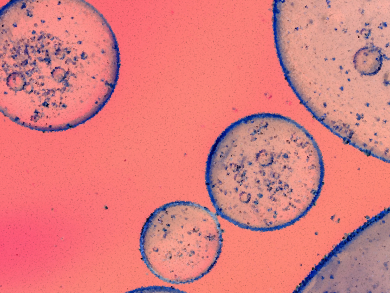The use of biologics (drugs made from larger biomolecules) is still new, but has great potential. This class of drug comprises, e.g., proteins, enzymes, nucleic acids, and larger glycoprotein complexes. The persistent problem with biologics is how to deliver them through the cell membrane to work on intracellular targets.
One technique for delivering proteins and siRNAs has been the use of extracellular vesicles (EVs). Problems with this method are that the biomolecules have to be introduced into purified mature EVs and that, when taken up by target cells, the cargo enters the lysosome, where harsh conditions can trap and destroy it.
Quan Lu, Harvard T. H. Chan School of Public Health, Boston, MA, USA, and colleagues have used a naturally occurring microvesicle called ARMM to grow EVs that already contain the cargo molecule. The microvesicles contain the ARRDC1 protein. The team has shown how three different biologics could be incorporated into ARMMs and delivered into cells. The first is the p53 protein, which was simply fused to the ARRDC1 protein. When the resulting p53-containing ARMMs were incubated with p53-deficient cells, there was a measurable increase in downstream p53 signaling, which showed that functional protein had been delivered.
The team also found that when ARRDC1 is fused to an RNA-binding domain, this domain can then capture an RNA of choice and introduce it into the ARMMs. In addition, ARRDC1 can bind to a short tag placed at the end of other proteins (known as the WW domain). After adding several WW domains to the end of the Cas9 protein, the team was able to show that this large protein/RNA complex could be delivered into cells and edit a specific gene inside them.
These preliminary results appear promising, especially if the method can be used to deliver intact Cas9/guideRNA complexes for CRISPR-mediated gene editing. There is some indication that ARMMs may be able to enter directly into the target cells, bypassing the lysosomal degradation pathway facing most EVs. However, the process for preparing purified ARMMs is currently quite labor intensive and a scalable method is needed.
- ARMMs as a versatile platform for intracellular delivery of macromolecules,
Qiyu Wang, Jiujiu Yu, Tatenda Kadungure, Joseph Beyene, Hong Zhang, Quan Lu,
Nat. Commun. 2018.
https://doi.org/10.1038/s41467-018-03390-x




